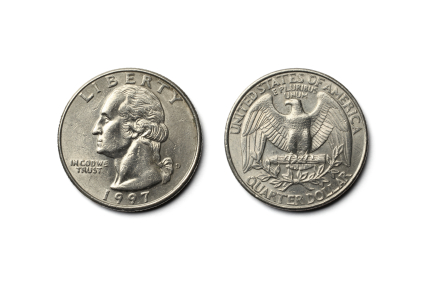Deluxe Duplex: How to Effectively Use the Back of Patient Statements
August 22, 2012 •Brian Watson

 From smart, efficient content organization, to bill copy that’s simple, to-the-point, and jargon free, most of the instruction about patient friendly statement design tends to revolve around what happens on the face of the document.
From smart, efficient content organization, to bill copy that’s simple, to-the-point, and jargon free, most of the instruction about patient friendly statement design tends to revolve around what happens on the face of the document.
And rightfully so. That’s the billing real-estate that patients view first. Where key account and transaction details are presented. And the spot for really-important-variable-elements like personalized customer service information, recipient-specific billing channel information, and promotional messaging.
In other words, it’s the main hub of the patient statement. And tends to be a really important component of healthcare providers’ brass-tacks revenue cycle performance.
But the front of your billing isn’t the patient statement end-all, be-all. That’s because there are two sides to every sheet of paper. And what happens on the back of the document can also have a very key part to play in patient accounting operations.
The Benefits of Duplex
Duplex printing allows automatic imaging of both front and back sides of a sheet of paper. And it’s a simple, efficient way to apply patient friendly billing standards that improve the productivity of your patient statements.
How? Best-practice statement processing solutions embrace the critical role that whitespace, content hierarchy, and smart, concise design plays in aiding statement readability. But going too minimal on transaction details, or billing instructions, or the financial aid and payment plans you offer isn’t an option either. That means sometimes there’s just too much content for a statement to fit on one page (while still adhering to patient friendly design standards).
And while using additional pages is a perfectly acceptable recourse, it’s also more expensive than duplex printing (extra forms cost extra money) and doesn’t make environmentally friendly use of all available billing space.
That’s why we stump for using duplex printing on statements, when possible, to provide critical, but relatively set-in-stone billing information and tools on the reverse side of your patient statements. We suggest using duplex for:
1). Patient Profile and Insurance Updates. From home ownership to employment, change is a constant. According to the US Census Bureau, over 14% of Americans move each year. And a 2011 Cornerstone OnDemand survey reports that 21 million Americans planned to change jobs this year alone.
The upshot is things like patient address, phone, employer, and insurance information tends to change. Frequently. Printing static patient/guarantor and insurance update forms on the back of the statement’s payment stub provides a quick and easy way for patients to update or correct (and remit along with payment) outdated or inaccurate profile information. And that offers tangible benefits in the here-and-now: patient records in your database are clean and up-to-date. Plus long term: helping to reduce revenue cycle costs and delays from future undeliverable mail or insurance snafus.
2). Reiterating Contact Information. No matter how patient friendly your statement, billing questions will inevitably arise. For most patients, the contact information on the front of the statement will more than suffice. They just want to find out how to call, email, or go online to resolve their issues.
Other patients will need a little more detail. And while contact info on the front of the statement is typically checked by space limitations, the reverse side is an ideal place to put more in-depth info and instruction alongside typical phone, email, and online contact particulars. That includes:
• A mailing address for payments, questions or requests.
• Your patient accounting department’s hours of operation.
• Instructions on how to request an itemized bill.
• A Spanish-language translation of common billing instructions and prompts.
• A general overview of automated phone service options
3). Providing Patient Financial Service Instructions. As with customer service contact info, the front of your statement should use specialized icons, bold text, and call-out boxes to provide all the payment channel information the vast majority of your patients will ever need.
But it should also be prepped and ready for those patients that have additional questions or need a little more in the way of directions. That’s where the reverse side of your bill comes into play: providing the space for you to dive deep on a host of patient financial service issues, like:
• Special guidelines, instructions, and information about the billing process.
• More detail on traditional billing options (i.e. your pay-in-person option or local phone info to go along with your toll-free number).
• An introduction to, and follow-up phone information for, the personalized financial services you offer: from Charity Care through individual financial counseling.
4). Listing Patient Billing FAQs. Echoing the 80/20 rule, most patient billing and financial services issues ultimately tend to blend together into a list of frequently asked questions. And while there’s not enough room to address the full spectrum of patient billing quandaries, providing simple answers to 3-5 common error/issue resolution and payment channel questions can help head-off potential patient statement issues before they become full-fledged problems (and the basis for a call to your service center).
5). Promoting Your Brand. According a 2009 InfoTrends study, the average consumer spends only 15 seconds with each direct mail piece they receive, but a whopping 2 to 3 minutes examining billing and transactional documents.
But while the value that branded messaging and TransPromo advertisements bring to the table is clear, sometimes there’s just not the space to introduce a marketing appeal on the front of your statements without disrupting all-important bill readability. An ideal compromise? Use the reverse side of your billing to present brand messaging, talk-up special events, or cross-promote treatment services.
Now that you’re up to speed on duplex statement design, we invite you to go beyond the back of the bill. Learn all about smart, effective statement design best practices in our latest free whitepaper, Building a Better Bill: Why Good Statement Design Matters (And How You Can Get It).
What other kinds of information do you present on the back of your statements?
Get Updates
Featured Articles
Categories
- Charity Care Management (1)
- Compliance (2)
- Customer Service (8)
- Digital Front Door (1)
- Direct Mail (6)
- eBilling (1)
- EBPP (34)
- ESL Statement (2)
- eStatement (1)
- Healthcare Channel Partner Billing (1)
- IVR (3)
- Mobile Payment (11)
- Online Billing and Payment (6)
- Online Patient Payment (17)
- Outsource Print Management (4)
- Paperless Billing (4)
- Patient Engagement (2)
- Patient Friendly Billing (21)
- Print and Mail (7)
- QR Codes (1)
- Quick Pay (7)
- Security (1)
- Self-Pay Patients (9)
- Self-Pay Revenue (4)
- Statement Design (32)
- Statement Print and Mail (1)
- Statement Printing and Mailing (28)
- Statement Processing (36)
- TransPromo (1)
- Up-Front Billing (1)

